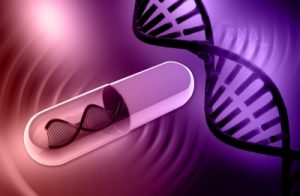What Diseases Can Stem Cell Therapy Treat?
What Diseases Can Stem Cell Therapy Treat?

Image courtesy of dream designs at FreeDigitalPhotos.net
Stem cell therapy is not a completely new way of treating diseases. This therapy has been used in treating diseases since 1930 when stem cells were taken from bone marrow as a transplant in cancer patients. Today, experts in stem cell therapy know that cells from bone marrow are not very potent in terms of treating damaged tissue. Moreover, this type of stem cells goes together with a high amount of white blood cells that may have the opposite effect on a patient’s immune system and his general health condition. Put it simply, they do more harm than good. Because of that, experts use stem cells from fat. Fat contains more stem cells than bone marrow and almost none white blood cells. Furthermore, a procedure of isolating stem cells from fat is simple. It requires local anesthesia only. Last several decades, stem cell therapy helps patients with leukemia or lymphoma to heal cancer. Doctors use healthy stem cells and transplant them into patient’s blood. Before applying the process of transplantation, they annihilate malignant cells or bad hematopoiesis. To learn more about what disease stem cell therapy can treat, the article “About Stem Cells Technology” gives us the following explanation.
What Diseases Can Stem Cell Therapy Treat?
Haematopoietic stem cells are a somatic cell population with highly specific homing properties and are capable of self renewal and differentiation into multiple cell lineages. Human haematopoietic progenitor cells, like stromal cell precursors in bone marrow, express the CD34 antigen, a transmembrane cell surface glycoprotein identified by the My10 monoclonal antibody. However, pluripotent stem cells constitute only a small fraction of the whole CD34+ population, which is by itself rather heterogeneous regarding phenotype and function. The best way to define haematopoietic stem cells is from their functional biology. They are known to restore multilineage, long term haematopoietic cell differentiation, and maturation in lethally cytoablated hosts. Haematopoietic stem cells can be obtained from bone marrow, peripheral blood, umbilical cord blood, and fetal liver.
The use of peripheral blood stem cells in both autologous and allogeneic transplantation has become routine as they can be collected on an outpatient basis and also promote a consistent acceleration in haematopoietic reconstitution after engraftment. Umbilical cord blood stem cells have been used progressively in paediatric patients, from both related and unrelated HLA-matched donors. In recipients with severe T cell immunodeficiency disorders, fast engraftment is required together with a low risk of graft versus host disease and a low viral transmission rate. Since umbilical cord blood stem cells can be expanded in vitro or frozen for storage in cell banks they have been used in clinical trials for both autologous and allogeneic haematopoietic stem cell transplantation.
The bone marrow is a mesenchyme derived tissue consisting of a complex haematopoietic cellular component supported by a microenvironment composed of stromal cells embedded in a complex extracellular matrix. This extracellular matrix has an important role in the facilitation of cell-to-cell interaction, in addition to a more complex role in the binding and presentation of cytokines to the haematopoietic progenitor cells. The cytokine milieu and extracellular matrix interaction provides the “road map” for maturation and differentiation of stem cells, which should be instrumental for their in vitro manipulation before therapeutic use. For example, haematopoietic stem cells can be manipulated in vitro to generate dendritic cells, the most potent antigen presenting cells.
Dendritic cells have a pivotal role in the elicitation and regulation of antigen specific, major histocompatibility complex-restricted T cell responses and are thought to be the only antigen presenting cells able to prime naive T cells. Dendritic cells can be derived from CD34+ precursors in response to granulocyte macrophage colony stimulating factor and tumour necrosis factor α and from monocytes cultured with granulocyte macrophage colony stimulating factor and interleukin-4. In vitro generated dendritic cells (fig) that have been transduced with genes coding for tumour specific antigens or pulsed with tumour specific antigen or peptide could be useful for induction of cytotoxic T cell responses. Dendritic cell tumour vaccines could be important future therapeutic tools; phase II clinical trials are under way and show limited efficacy. On the other hand, the migration and function of dendritic cells derived from liver in an allogeneic environment may be seminal in the development of donor specific tolerance. Genetic engineering of dendritic cells to express immunosuppressive or immunoregulatory molecules may provide a novel method to promote graft tolerance, reducing dependence on systemic immunosuppression.
Experts also believe that stem cell therapy can be used in treating almost all diseases because every disease makes a change in stem cells. Even though the therapy is not yet fully tested, it shows beneficial effects in treating osteoarthritis, knees, degenerative disc disease, lungs, neurological diseases, Parkinson’s, and injuries. However, the effects of the therapy do not last until we change our lifestyle. Experts suggest making radical changes in our lifestyle such as healthy diet, exercising, reducing stress, etc., if we want to take the best from stem cell therapy.


